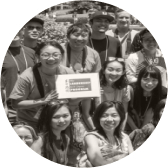Ms. Kazuyo Sejima
 Kazuyo Sejima is a leading figure in contemporary architecture, known for her minimalist yet powerful designs that harmonize transparency, light, and spatial fluidity. After graduating with a degree in architecture from Japan Women’s University in 1979 and completing her master’s studies in 1981, Sejima gained formative experience at Toyo Ito & Associates. In 1987, she launched her own practice, Kazuyo Sejima & Associates, and in 1995, with Ryue Nishizawa, she co-founded SANAA (Sejima and Nishizawa and Associates), which became known for its innovative approach to architecture.
Kazuyo Sejima is a leading figure in contemporary architecture, known for her minimalist yet powerful designs that harmonize transparency, light, and spatial fluidity. After graduating with a degree in architecture from Japan Women’s University in 1979 and completing her master’s studies in 1981, Sejima gained formative experience at Toyo Ito & Associates. In 1987, she launched her own practice, Kazuyo Sejima & Associates, and in 1995, with Ryue Nishizawa, she co-founded SANAA (Sejima and Nishizawa and Associates), which became known for its innovative approach to architecture.
Sejima’s work has received international acclaim for its elegance and commitment to creating spaces that connect people with their surroundings. In 2010, she became the second woman to receive the Pritzker Architecture Prize, awarded jointly with Nishizawa, for their pioneering contributions. That same year, Sejima made history as the first woman to serve as director of the architecture sector at the Venice Biennale, where she curated the 12th International Architecture Exhibition.
Some of Sejima's most iconic works with SANAA include the New Museum in New York City, the Rolex Learning Center in Switzerland, and the Louvre-Lens in France. In Japan, her work includes Kanazawa’s 21st Century Museum of Contemporary Art and New Kagawa Prefectural Sports Arena. Recent achievements include being named a jury of the Pritzker Architecture Prize and receiving the Praemium Imperiale award in 2022, reflecting her sustained impact on the global architectural landscape. In 2024, she was selected as a Person of Cultural Merit awarded to those who have made outstanding cultural contributions to the advancement and development of Japanese culture.
Sejima’s design philosophy imagines spaces in architecture where diverse people can spend time together. She is one of the leading voices in inspiring new generations in her field.




